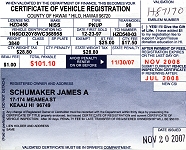In each of the exercises below, the (population)
data is either known or assumed to be normally distributed...
- A data set has a mean of 500 and standard deviation of 100. Find the following:
- The intervals representing one, two, and three standard deviations from the mean.
- The percentage of the data lies in each of these intervals.
- Draw a sketch of the corresponding normal curve.

- A data set has a mean of 16 and a standard deviation of 0.2. Find the following:
- The intervals representing one, two, and three standard deviations from the mean.
- The percentage of the data lies in each of these intervals.
- Draw a sketch of the corresponding normal curve.
 A
breakfast cereal producer determines that the mean weight of a box of cereal is
16 oz with a standard deviation of
0.2 oz. A
breakfast cereal producer determines that the mean weight of a box of cereal is
16 oz with a standard deviation of
0.2 oz.
- What percentage of the boxes will weigh less than 16 oz?
- What percentage of the boxes will weigh less than 16.2 oz?
- What percentage of the boxes will weigh more than 16.2 oz?
 The
mean age of a registered vehicle in the United States is 8 years
while the standard deviation is 16 months. The
mean age of a registered vehicle in the United States is 8 years
while the standard deviation is 16 months.
- What percentage of the vehicles are more than 8 years old?
- What percentage of the vehicles are less than 4 years old?
- What percentage of the vehicles are more than 12 years old?

- If the average adult's resting heart rate is 68 beats per minute with a
standard deviation of 4 beats per minute determine how many individuals
in a survey of 100 adults you would expect to have a (resting) heart rate of 64 or less
beats per minute.
- If
 the annual rainfall in Hilo is 130 inches per year and the standard
deviation is 30 inches per year, then find how many years in the upcoming
century one would expect the annual rainfall to exceed 190 inches.
the annual rainfall in Hilo is 130 inches per year and the standard
deviation is 30 inches per year, then find how many years in the upcoming
century one would expect the annual rainfall to exceed 190 inches.
 A
tire retailer sells a tire whose mean lifetime (before needing replacement) is
32,000 miles and whose standard
deviation is 3,000 miles.
Approximately 84% of the tires, should last at least how many miles? A
tire retailer sells a tire whose mean lifetime (before needing replacement) is
32,000 miles and whose standard
deviation is 3,000 miles.
Approximately 84% of the tires, should last at least how many miles?
- Using the information provided in problem #7 (above), find the minimum number of miles that
the manufacturer should expect only approx. 16% of the tires sold will need replacement.
- A teacher gives an exam with a mean of 70 and a standard deviation of 10. If only the top
2.3% of the class scores will receive an A, find
 the cut-off score (minimum grade needed to earn an A).
the cut-off score (minimum grade needed to earn an A).
- A class exam has a mean of 65.2 and a standard deviation of 12.5. Using the conventional
grading curve scheme, find the cut-off scores for each of the letter grades, A, B, C, D and F.
- A class exam has a mean of 65.2 and a standard deviation of 15.5. Using the conventional
grading curve scheme, find the cut-off scores for each of the letter grades, A, B, C, D and F.
- An electronics manufacturer sells a particular model of Compact Disc player. The
company's quality control department determines that the mean
 lifetime (before failure) is
3500 hrs of useage with a standard deviation of
250 hrs. The resident mathematician reports
to the marketing department that they ought to warranty the CD-player for 30 months.
He assures them that, statistically speaking, if a typical user operates the player for 3
(or less) hrs per day then the company will only
need to repair or replace less than 1% of the machines. Is he correct? Justify
your answer. (Hint: Calculate the number of hours a typical user
operates the player over a 2½ year period.) lifetime (before failure) is
3500 hrs of useage with a standard deviation of
250 hrs. The resident mathematician reports
to the marketing department that they ought to warranty the CD-player for 30 months.
He assures them that, statistically speaking, if a typical user operates the player for 3
(or less) hrs per day then the company will only
need to repair or replace less than 1% of the machines. Is he correct? Justify
your answer. (Hint: Calculate the number of hours a typical user
operates the player over a 2½ year period.)
|